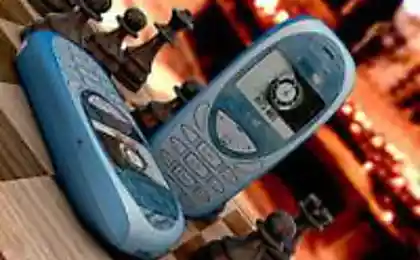775
Exoplanet discovered with a tail of hydrogen

Graphics: Mark Garlick / University of Warwick i>
Very unusual space object astronomers discovered , watching the red dwarf Gliese 436 telescope" Hubble ". At a distance of 4, 35 million kilometers around the star rotates exoplanet Gliese 436b size of Neptune (mass 22, 2 Earth, the radius of 4 3 earth), leaving a tail of a large amount of hydrogen. From the outside it looks like a giant comet spins. The planet makes a complete revolution around the star 2, 6 Earth days.
The fact that a rigid X-ray radiation from the star burns upper atmosphere Gliese 436b, creating a gaseous cloud that absorbs and reflects the light from the star ultraviolet rays, visible with the "Hubble" at a distance of 33 light years.
"About 1,000 metric tons of hydrogen is burned with Gliese 436b atmosphere every second, which is only 0, 1% of its total weight of every billion years - said Dr. Peter Wheatley (Peter Wheatley) from the University of Warwick (UK). - Most likely, the same process goes much more intensively on other extrasolar planets where the entire atmosphere can be removed evaporate without a trace ».
Peter Wheatley - one of the authors of scientific works , published yesterday in the journal Nature (< a href="http://www.spacetelescope.org/static/archives/releases/science_papers/heic1515a.pdf">копия).
The observed loss of atmospheric gas giant near the star suggests that small rocky planets like Mercury once could be gas giants, it said in scientific work, albeit with the caveat that this topic is still no certainty of calculations.

Tail exoplanets extremely high. In the widest part of it 50 times in size diameter of the star.
"This is a cloud hydrogen so impressive! - Admires the lead author of the research, David Ehrenreich (David Ehrenreich) Observatory of the University of Geneva. - Although the rate of evaporation does not threaten the planet right now, we know that the star, a red dwarf weakening in the past was much more active. This means that the planet's atmosphere quickly evaporated in the first billion years of its existence. Overall, we estimate that the planet has lost 10% of its atmosphere ».
Exoplanet Gliese 436b belongs to a class of "warm Neptune" and consists mainly of exotic form of water ice, formed at high temperature and high pressure. The temperature of the lower layers of the atmosphere reaches Venus, although the planet is 10 times closer to its star than Mercury is to the sun.
Authors of research consider that this is a very important discovery, which will radically change our assessment of the characteristics of the atmospheres of extrasolar planets, Gliese 436b and may be only the first of thousands of such exoplanets, which will be opened soon.
Source: geektimes.ru/post/252558/























